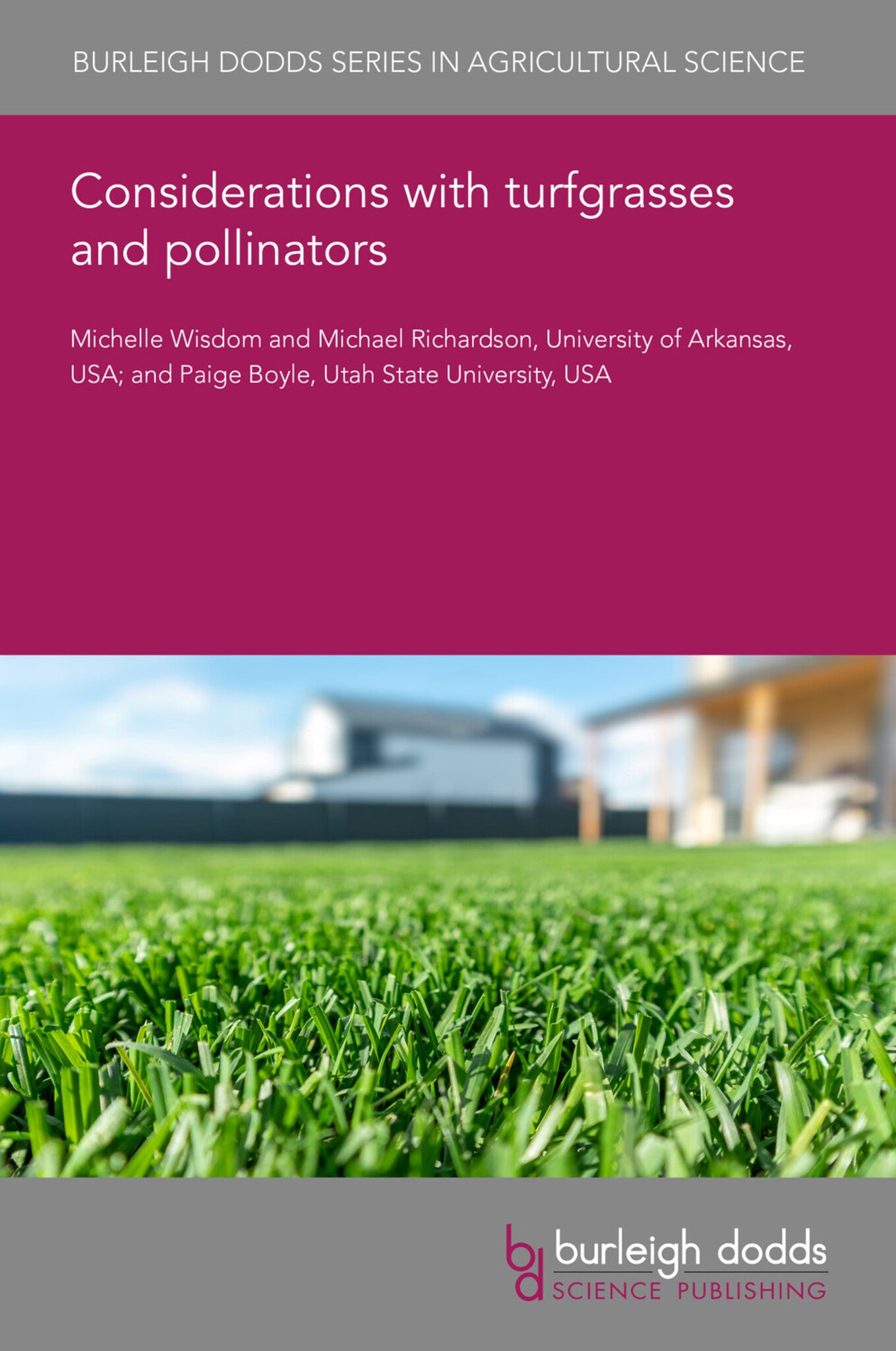We're sorry. An error has occurred
Please cancel or retry.
Considerations with turfgrasses and pollinators

Some error occured while loading the Quick View. Please close the Quick View and try reloading the page.
Couldn't load pickup availability
- Format:
-
23 January 2023

The global rise of the human population, increase in urbanization, and reliance on pesticide use has led to a decline in ecosystem services, pollinator habitat and forage sites, and pollinator abundance. Converting unused turfgrass ecosystems to pollinator-supporting plantings or incorporating flowering plants that provide pollinator forage into turfgrass systems are actions that turfgrass managers and homeowners can take to help mitigate the effects of urbanization and habitat loss. This chapter will discuss reasons behind pollinator declines, ways turfgrass systems might be enhanced to promote pollinators, and highlight potential planting options. Case studies highlight actions being taken in home lawns and golf course out-of-play areas to support pollinators, and potential drawbacks to mixed grass/forb plantings. Future research needs are also discussed.

SCIENCE / Life Sciences / Horticulture, Commercial horticulture, TECHNOLOGY & ENGINEERING / Agriculture / Sustainable Agriculture, TECHNOLOGY & ENGINEERING / Agriculture / Agronomy / Crop Science, TECHNOLOGY & ENGINEERING / Agriculture / Beekeeping, SCIENCE / Life Sciences / Zoology / Entomology, Agronomy and crop production, Sustainable agriculture, Agricultural science, Apiculture (beekeeping)

- 1 Introduction
- 2 Land use change and pollinator decline
- 3 Pollinators in the landscape
- 4 Urban grasslands as sources of pollinator habitat and forage
- 5 Plant selection
- 6 Management of pollinator-friendly mixtures
- 7 Additional considerations
- 8 Conclusion and future trends
- 9 Where to look for further information
- 10 References



